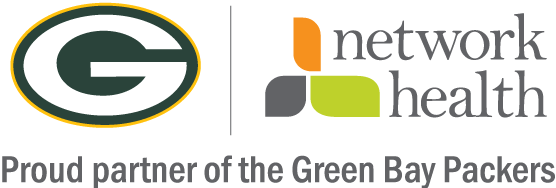Jargon Dictionary
At Network Health, we strive to make health insurance easy to understand. We know it can be overwhelming, so below are some commonly used insurance terms and phrases.
Advance care planning/Power of attorney for health care - A form you fill out to give someone permission to make health care decisions on your behalf.
Affordable Care Act (ACA) – Short for Patient Protection and Affordable Care Act (PPACA), this is a health care law that passed in March of 2010. The law has 3 primary goals—make health insurance affordable, expand the Medicaid program and support care methods designed to lower the cost of health care.
Annual wellness visit – An appointment with your personal doctor to review your health and provide necessary screenings and tests. This visit helps maintain your health and can help your doctor find health problems early.
Appeal – A request for Network Health to reconsider a decision that denies a benefit or claim.
Assure level-funded – An insurance plan for employers that offers the security of a fully insured plan with the financial advantages of a self-insured plan. Employers pay a fixed rate and are eligible to get money back if health care claims are less than the funded amount.
Brand name drug – A drug that’s discovered, developed and marketed by a pharmaceutical company. This drug is protected by a patent.
Care management – If you are diagnosed with a serious health problem, Network Health care managers can help coordinate care and answer your questions. Care managers are often nurses and are experts in navigating the health care system.
Centers for Medicare and Medicaid Services (CMS) – The federal agency that runs Medicare, Medicaid, Children’s Health Insurance Programs and the Marketplace.
Certificate of coverage – Also known as your policy. This document describes plan details, including who pays, how claims work, who’s eligible, what drugs are covered, how referrals work and more.
Chronic condition – A long-term health problem that requires frequent or ongoing medical care.
Claim – A request for payment that is submitted by your provider to Network Health when you receive health care services.
Coinsurance – A set percentage you pay for a type of health care or a prescription drug. For example, 10 percent coinsurance means you pay 10 percent of the cost. Network Health pays the rest.
Comprehensive list of covered drugs – Sometimes also referred to as a Formulary or Preferred Drug List, this is a list of covered drugs that includes the most common medications with information about their tier and any restrictions.
Condition management – Network Health’s team of registered nurses that help manage specific health conditions by connecting you with resources, local workshops and educational events.
Coordination of Benefits (COB) - If you and other members of your household are covered by more than one plan, Network Health will communicate with the other health insurance company to determine which company pays for each of your claims.
Copayment – A set fee you pay for a type of health care or a prescription drug. For example, your copayment for a doctor visit could be $20. Once your deductible is met, you pay $20 for your doctor visit. Network Health pays the rest.
Cost sharing – Your share of the cost for health care services or medications.
Deductible – The amount you must pay for covered health care services before Network Health begins paying.
Dependent coverage – Insurance coverage for family members of the policyholder. Dependents are most commonly a spouse or child(ren).
Drug tier – The cost level of a drug. The higher the tier, the more you will pay.
Durable Medical Equipment (DME) – Equipment and supplies ordered by your doctor for daily or extended use. Examples of DME include wheelchairs, crutches or blood testing strips for diabetics.
Effective date – The date your health insurance coverage starts.
Evidence of Coverage – The document that describes the details of a Medicare Advantage Plan.
Explanation of Benefits (EOB) – This is not a bill. It’s a statement you get in the mail after you’ve been to a doctor or hospital that lists the services you received. Usually, the charges will also be listed on the EOB.
Generic drug – Generic drugs are approved by the Food and Drug Administration as having the same active ingredients as their brand name counterparts. That means they work the same as brand name drugs, but can cost up to 80 percent less than brand name drugs. You can save money by asking for generics first.
Grievance – A formal complaint that you file when you are dissatisfied with the service or quality provided by your plan or doctor.
Health Insurance Marketplace – Also known as the Marketplace or Health Insurance Exchange, this is the website where a person can shop for individual health insurance coverage. It was created by the Affordable Care Act.
Health Maintenance Organization (HMO) – A type of health insurance plan where you must use certain in-network providers. HMO plans don’t cover out-of-network care except in an emergency.
High Deductible Health Plan (HDHP) – A health insurance plan with a higher deductible than a traditional plan. The monthly premium is usually lower. It can be combined with a health savings account (HSA) so you can pay for certain medical expenses with tax-free money.
HIPAA – The Health Insurance Portability and Accountability Act of 1996. This law protects the privacy and security of certain health information.

Health Reimbursement Account (HRA) – Employer-funded plans that allows employees to be reimbursed tax-free for qualified medical expenses up to a certain dollar amount every year.
Health Risk Assessment – Also known as a health assessment or health questionnaire, this is a list of questions you answer about personal health behaviors, risks, goals and overall health. It’s meant to evaluate your health status annually to identify specific needs for care. Your answers do not affect your coverage or what you’ll pay for your insurance.
Health Saving Account (HSA) – Available with a High Deductible Health Plan (HDHP). This is a savings account that lets you use pre-tax money to pay for qualified medical expenses, such as deductibles, copayments and coinsurance.
Independent review – When a third-party organization reviews final decisions made by Network Health. Usually an independent review occurs after a grievance (formal complaint) has been filed.
In-network – Doctors, hospitals and pharmacies that you can use with your Network Health plan. With certain plans, you must get services and medications from in-network providers. With some plans, you can get services and medications out-of-network, but you’ll pay more.
Medicaid – The state insurance program that provides free or reduced-cost health coverage to low-income people, families and children, pregnant women, the elderly and people with disabilities.
Medicare – Government-sponsored health insurance for people 65 and older and others who meet specific requirements.
Medicare Advantage – Like Medicare, but offered through a private insurer, like Network Health, these plans can offer additional benefits not included in the original government program.
Medication therapy management – A no-cost service offered by Network Health that reviews your medications to make sure you are taking the appropriate and most cost-effective medications to treat your illness(es). To be eligible, you must have at least three long-term medical conditions.
Member wellness – Network Health provides one-on-one support to help you achieve and maintain a healthy lifestyle.
Nurse line – A free 24-hour advice line that is available when you have health care questions. Call 888-879-8960 (TTY 888-833-4271) to speak to a registered nurse on Network Health’s Nurse Line.
Open enrollment – When you can join a health plan or make changes to your current plan.
Out-of-network – Doctors, hospitals and pharmacies that you can use with your Network Health plan. With certain plans, you cannot get services and medications from out-of-network providers. With some plans, you can get services and medications out-of-network, but you’ll pay more.
Out-of-pocket expenses – Everything you pay for that isn’t going to be reimbursed by your plan, like a deductible, coinsurance and copayment fee.
Out-of-pocket maximum – The maximum amount you’ll pay for coverage health care services during your plan year. Once this limit is reached, you plan pays 100 percent for all covered services.
Personal doctor – Also called a primary care practitioner or PCP, your main doctor who you visit for regular check-ups and refers you to specialists. Every person under your plan should have his or her own personal doctor, including children.
Personal Health Information (PHI) – Also referred to as protected health information. This is information that can be used to identify you and includes name, phone number, social security number, account number and more.
Point-of-Service (POS) – A type of insurance plan for employers that provides coverage for in- and out-of-network providers. Most of the time, you’ll pay less to use in-network providers.
Premium – The monthly payment you make for your health plan.
Preventive care –Health care that keeps you from getting sick or detects illness early, such as routine checks, flu shots and screenings. These services are typically covered 100 percent by Network Health.
Preventive drug – Like preventive care, preventive drugs can help you avoid illnesses and health conditions. As part of your Network Health plan, these drugs cost $0.
Prior authorization (prior approval) – When you need to get written approval to see another doctor, or have a service or treatment.
Referral – A written order from your personal doctor for you to see a specialist or receive specific medical services.
Specialist – A doctor who focuses on one specific disease, part or system of the body.
Subsidy – For plans purchased through the Marketplace, this is financial help provided by the government to help people afford health insurance.
Summary of Benefits – This document is for Medicare members. It describes the most common plan benefits and what you pay.
Summary of Benefits and Coverage – This document is for employer group and individual and family plan members. It describes the most common plan benefits and what you pay.
Telehealth – Telehealth is a broad term that can refer to remote clinical and non-clinical services, such as provider training, administrative meetings and continuing medical education.
Telemedicine/Online Visits – Telemedicine, or online visits, are a subset of telehealth that refers to providing clinical health care services and education remotely, using telecommunications technology. Telemedicine and online visits occur when the care received takes place via a remote connection. The patient and provider are not in the same physical location. This type of office visit is frequently used for follow-up visits, management of chronic conditions, medication management, specialist consultation and other clinical services that can be provided remotely by a provider via secure audio and video connections. These visits allow providers to diagnose symptoms, prescribe medication and send prescription for non-emergency medical conditions. Online visits are also referred to as virtual visits, video visits or e-health visits.
Telemonitoring – Telemonitoring, also known as remote monitoring, is the use of audio, video or other sharing technologies to real-time monitor the health status of a patient from a distance.



